Earlier this month, the design business from around the world headed as one to Milan for the furniture fair, or Saloni dei Mobili, the big event of the furniture year. It might be a trade fair, but don't let that fool you. It's one with glamour. While in the fiera itself, you'll find kilometers of shady reproduction delights and bourgeois white leather straight out of the 1980s, there's plenty of high design, and off-schedule exhibitions around the city that showcase the highest end of all. And with a party schedule to rival those of art fairs and fashion weeks, it's champagne heaven and canape hell.
The intermarriage of fashion and furniture always gets attention and this year in Milan was no exception. Even the design experts, who really should know better, found themselves battling across town in a decidedly overexcited way. Thomas Maier's departure from fashion to furniture turned out to be a deluxe range of shelves and tables in grey leather -- all displayed behind velvet ropes. So much for tactility, then. Over at Missoni, this journalist was properly castigated by a man in a black suit and earpiece for daring to sit on a Missoni-clad chair, as though I'd lent forward in a catwalk show and tweaked a model's nipples.
Things were a little looser back at furniture central -- the huge new fairground outside the city where all the heavy hitters are selling the real deal. Ron Arad had collaborated with the Miyake Design Laboratory to play with the idea of chairs in frocks. It's been done before -- last year Tord Boontje got together with Alexander McQueen, with patchy results -- but never quite so well. Wearable garments were shown on both mann-equins and Arad's thermoplastic bucket-shaped Ripple Chair produced by Moroso, and visitors could climb all over them if they wanted.
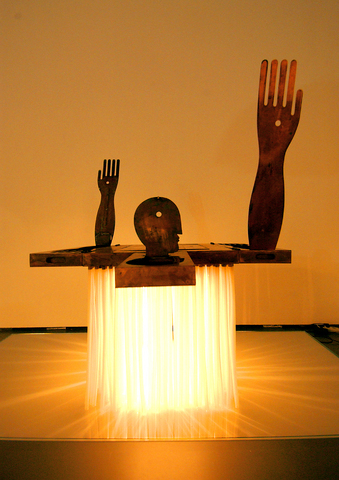
PHOTOS: AGENCIES
Over at Swarovski, the crystal company had approached Hussein Chalayan and young British/Brazilian fashion duo Basso & Brooke to add to its chandelier collection. Chalayan's response was a sculptural piece involving an aeroplane wing and an LED clock which he said talked about "the dichotomy between our experience of flight and our yearning for domesticity." Basso & Brooke's was more grounded in tradition -- a Marie Therese-shaped chandelier hung with 111 crystals, each laser-scored with a different image.
But what was really fashionable was the actual furniture. The best included incredible crinkly chairs by Francois Azambourg at Cappellini, varnished to a high gloss, while Tom Dixon carried on his louche 1970s bachelor theme with laminate prints and big repeat wallpapers in greys and pinks. His table-top chandelier in black metal is the best new bachelor toy for quite a while.
There was more 1970s slouching with the searingly bright ponyskin Corbeille sofas at Edra -- a definite test of that company's manifesto that "we don't want to make what the customer wants, we want the customer to try new things." And the Campana Brothers' layered-glass Brasilia table had a home-made retro feel, too. Dutch designer Marcel Wanders continued to push different boundaries at Moooi with a sofa that can be dressed in 20 different covers, including a footballer's wife special edged in fluffy white fun fur, that will customizationsell for 3,000 euros. I'd hate to call Wanders autocratic, but let's just say there's no room for customization here. "I am the designer. I don't want you to start playing with ideas," he said when asked about alternative combinations. "I've already done the job. I want to make things that girls will love more than their handbags."
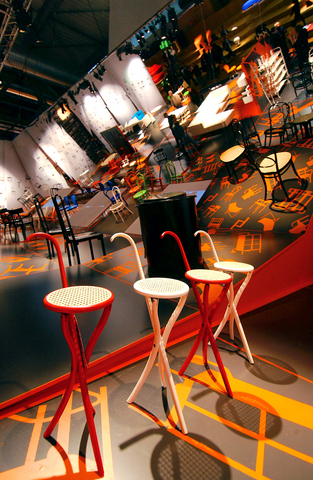
Also at Moooi, but designed by Swedish quartet Front, were a full-size horse lamp and a boar carrying a tray on its back -- pieces that took things beyond romance and theatricality into the realms of the hysterically camp.
Elsewhere, what Giulio Cappellini likes to call "neo rustic" was having its moment with raw oak benches he'd commissioned from Jasper Morrison. It's certainly time to hide away the walnut -- light wood is back, as just one look at the new and cheaper Case range by British company SCP made clear. And then there is the enduring trend for appliques and patterns and general prettiness, of which Patricia Urquiola's Antibodi loungers for Moroso, laden with felty flowers, were the star. "It's that craft spirit," sobbed the New York-based designer Karim Rashid. "It looks like we're going back to that word that isn't even in my vocabulary: cosy."
Perhaps he gained some solace at the super-chic display at Established & Sons, the British company launched last September by Alasdhair Willis (who, speaking of fashion meeting furniture, is Mr. Stella McCartney). The star of the show was architect Amanda Levete's perfectly executed Drift bench (though the talking point was an orange crate reiterated in finest oak by Jasper Morrison, with a retail price of ?90. "It is pure poetry," said an Established representative, with a dead straight face. But he didn't say whether we were talking haiku or humorous verse).
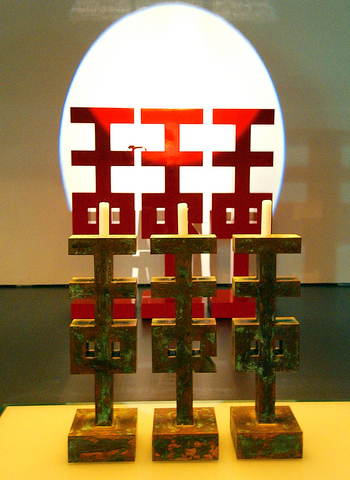
The Milan Furniture Fair is where you see these ideas first, and as with the catwalks of Paris, you have to pay dearly for the real thing. But in furniture as in fashion, it's only a matter of time before the high street will pounce on the best. Expect pale-wood furniture, glossy chairs and a sofa system with interchangeable covers in a retail park near you soon. Not to mention the odd orange crate.
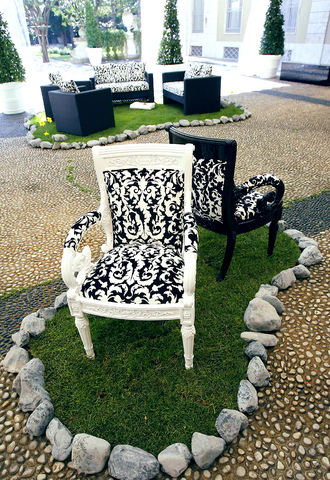
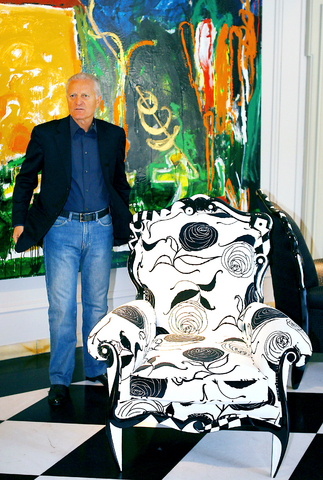
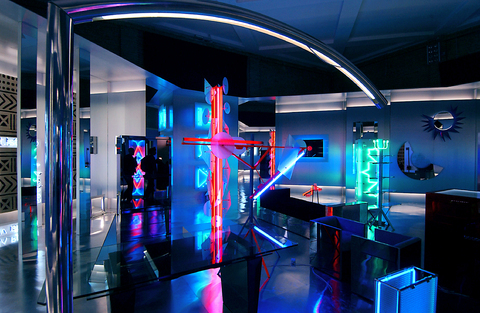
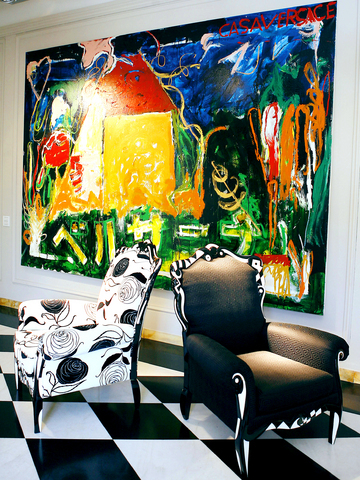

The canonical shot of an East Asian city is a night skyline studded with towering apartment and office buildings, bright with neon and plastic signage, a landscape of energy and modernity. Another classic image is the same city seen from above, in which identical apartment towers march across the city, spilling out over nearby geography, like stylized soldiers colonizing new territory in a board game. Densely populated dynamic conurbations of money, technological innovation and convenience, it is hard to see the cities of East Asia as what they truly are: necropolises. Why is this? The East Asian development model, with

June 16 to June 22 The following flyer appeared on the streets of Hsinchu on June 12, 1895: “Taipei has already fallen to the Japanese barbarians, who have brought great misery to our land and people. We heard that the Japanese occupiers will tax our gardens, our houses, our bodies, and even our chickens, dogs, cows and pigs. They wear their hair wild, carve their teeth, tattoo their foreheads, wear strange clothes and speak a strange language. How can we be ruled by such people?” Posted by civilian militia leader Wu Tang-hsing (吳湯興), it was a call to arms to retake

This is a deeply unsettling period in Taiwan. Uncertainties are everywhere while everyone waits for a small army of other shoes to drop on nearly every front. During challenging times, interesting political changes can happen, yet all three major political parties are beset with scandals, strife and self-inflicted wounds. As the ruling party, the Democratic Progressive Party (DPP) is held accountable for not only the challenges to the party, but also the nation. Taiwan is geopolitically and economically under threat. Domestically, the administration is under siege by the opposition-controlled legislature and growing discontent with what opponents characterize as arrogant, autocratic

When Lisa, 20, laces into her ultra-high heels for her shift at a strip club in Ukraine’s Kharkiv, she knows that aside from dancing, she will have to comfort traumatized soldiers. Since Russia’s 2022 invasion, exhausted troops are the main clientele of the Flash Dancers club in the center of the northeastern city, just 20 kilometers from Russian forces. For some customers, it provides an “escape” from the war, said Valerya Zavatska — a 25-year-old law graduate who runs the club with her mother, an ex-dancer. But many are not there just for the show. They “want to talk about what hurts,” she